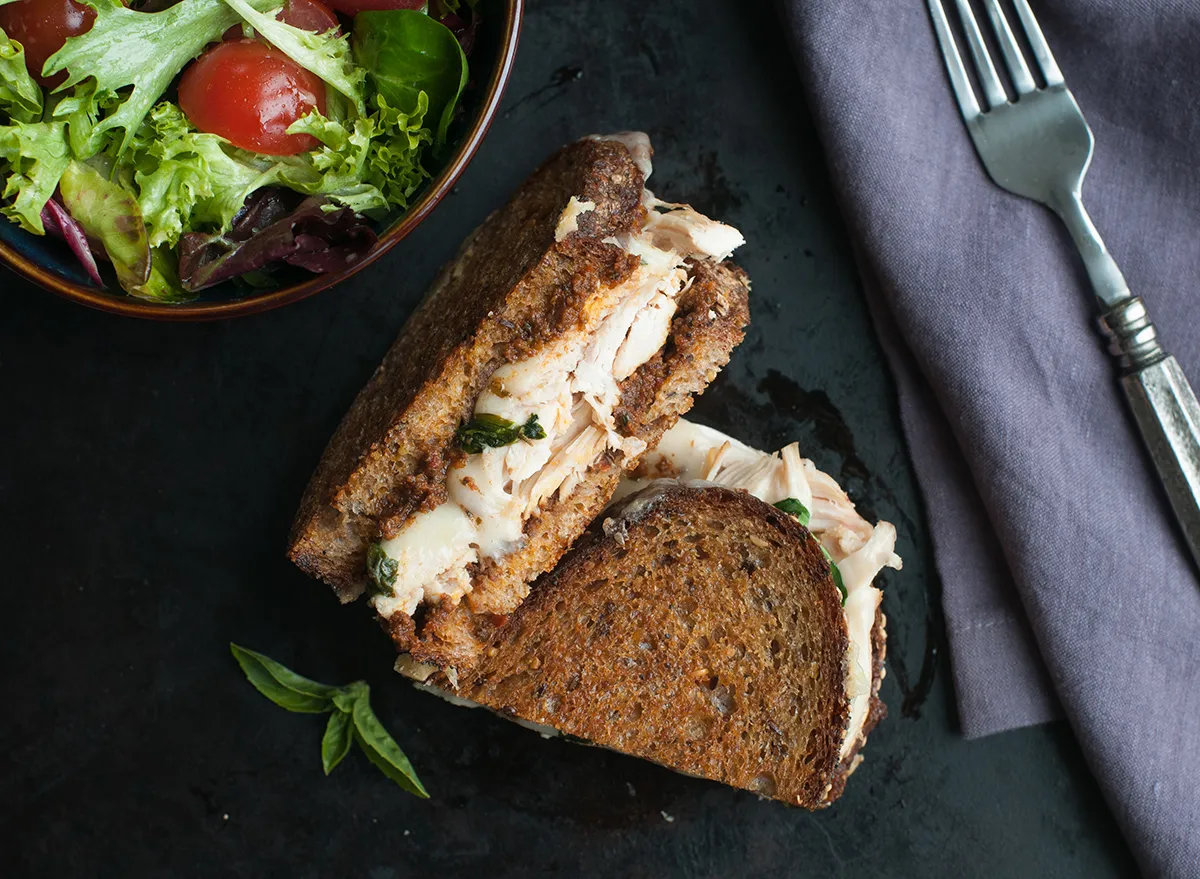Bread has a bad rap in America these days and is often avoided by people who are trying to lose weight or pursue a healthier lifestyle. Just a few years ago, Forbes released a statistic that said at least 3.1 million Americans follow a gluten-free diet, and 72% of those people are considered PWAGs, or "people without Celiac's avoiding gluten." In other words, over 2 million Americans have chosen to cut bread and other gluten-containing foods from their diet due to preference rather than a serious food allergy.
What a lot of people don't realize is that giving up gluten isn't necessarily better. (See: 5 Major Mistakes You're Making on a Gluten-Free Diet.) In fact, there are plenty of whole grain and whole wheat breads that can actually provide us with a ton of added health benefits. But when we are looking for one of these healthier bread options, the amount of choices we are faced with can become overwhelming!
We asked Amy Goodson MS, RD, CSSD, LD, author of The Sports Nutrition Playbook what she thought was the best whole wheat bread to buy, and she told us she always goes for Dave's Killer 100% Whole Wheat Bread. Read on to find out why, and for more tips on eating healthy, sign up for the Eat This, Not That newsletter!
Why is Dave's Killer Bread the best whole wheat bread to buy?
Dave's Killer Breads are among some of the healthiest breads to buy in grocery stores right now, largely because of their high fiber and protein content, as well as their cleaner ingredients. And according to Goodson, Dave's Killer 100% Whole Wheat Bread is no exception.
"With 4 grams of protein and 3 grams of fiber per slice, Dave's Killer Whole Wheat is my favorite," says Goodson, "and while many 100% whole grain and whole wheat breads are a great option, this is my dietitian pick."
When it comes to choosing a whole wheat bread, it's important to look closely at the label. If a wheat bread does not say "100% Whole Wheat," you may want to put it down and swap it out for something like Dave's, which is made with organic whole wheat and zero refined flours.
RELATED: Secret Side Effects of Eating Bread, Say Dietitians
Benefits of eating 100% whole wheat

Whole wheat and whole grain breads are both very similar, with whole grain meaning that it is made from the entire grain kernel of something like wheat, oat, or barley, and whole wheat meaning it is made specifically from the whole wheat kernel.
According to a 2019 study published in Nutrients, experts believe that there is a connection between lower risk of weight gain and a diet that consists of whole grains. Although researchers are still working to investigate this relationship, these aren't the only findings that suggest whole wheat bread can have healthy side effects.
The Journal of Chiropractic Medicine found that whole grains, which include whole wheat, can actually help us prevent type 2 diabetes and cardiovascular disease. A review from Comprehensive Reviews in Food Science and Food Safety says that these prevention properties are due to the phytochemicals and fiber found in whole grains.
Along with helping with weight management and prevention of certain diseases, eating whole wheat bread might even help us live longer lives. A study from The Lancet concluded that diets higher in soluble fiber led to a decrease in all-cause mortality, which led these researchers to suggest swapping out our refined grains for whole ones.
Read these next:
The #1 Best Whole Wheat Bread to Buy, Says Dietitian | Eat This Not That - Eat This, Not That
Read More

No comments:
Post a Comment